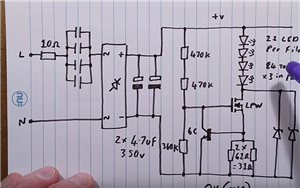
broadgage:
0.285% Voltage drop seems a remarkably low allowance.
5% is commonly allowed, though remember that this is the TOTAL voltage drop from origin to point of use. So if most of this has already been used in a sub main such a low allowance is possible.
5 % is only for equipment not covered by a product standard (525.201), or, perhaps socket-outlets for general use - specific equipment (standards or manufacturers instructions) may well be different. See preceding Regulation, and the first one under 525, Regulation 525.1:
525.1 In the absence of any other consideration, under normal service conditions the voltage at the terminals of any fixed current-using equipment shall be greater than the lower limit corresponding to the product standard relevant to the equipment.
For example, BS EN 61851-1 for EV charging equipment specifies total - 10 % below nominal, i.e. 4 % in the installation in the UK, not 5 % ... although a manufacturer may permit more.
Appendix 4, section 6.4, volt drop limits (along with Regulations 525.202 and 525.203) applies to Regulation 525.201, equipment not covered by a product standard ... and is "informative" ("guidance") not "normative" ("requirement of the standard").
Was wondering if H07RN-F would also be suitable option?
Run around on tray.
For example, BS EN 61851-1 for EV charging equipment specifies total - 10 % below nominal, i.e. 4 % in the installation in the UK, not 5 %
Run around on tray.
How are you attaching the cables to the tray? Bear in mind that supporting cables only using plastic devices (e.g. nylon cable ties) is no longer permitted.
Cheers Andy. Cables will be on top of horizontal tray, I understand that plastic cable ties are fine for attaching in this situation? Is that correct? Any vertical or horizontal cable runs without tray support will be clipped direct using metal wall cable clips.
Re Cable choice - what options would you personally go for?
Main cable runs to power sockets and/or isolators around perimeter on tray and clipped direct, all above 1m from ground - NYY? SWA?
Secondary cable runs from Isolator (1m above ground) to Element (30cm above ground) - CY? NYY? SWA?
Cheers!
whjohnson:
RE: Choice of Cable Type, given your earlier description, I wold go NYY. A good rule of thumb - although not scientific in any meaningful way - is that anything below 1 metre in horizontal height from the floor should really have some mechanical protection via armour/metal trunking/conduit etc.
NYY should see you right for most of your installation, but take special care when choosing cable for heatars/hot areas.
Cheers WH!
Re Cable choice - what options would you personally go for?
Main cable runs to power sockets and/or isolators around perimeter run via tray and/or clipped direct, all above 1m from ground - NYY? SWA?
Secondary cable runs from Isolator (1m above ground) to Elements (30cm above ground) - CY? NYY? SWA?
We're about to take you to the IET registration website. Don't worry though, you'll be sent straight back to the community after completing the registration.
Continue to the IET registration site